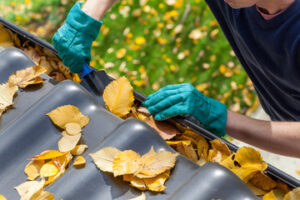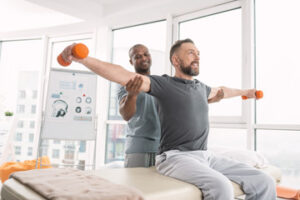Land Clearing Georgetown TX is a critical process for a variety of construction, agricultural, and development projects. It involves the removal of trees, shrubs, stumps, and other vegetation from a piece of land to make it more suitable for construction, farming, or other uses. This process not only improves the safety of the land but also enhances its functionality, making it more usable and accessible.

The decision to clear land is often driven by the need to build structures, create roadways, or cultivate crops. The benefits of land clearing go beyond just aesthetics and practicality; it plays a vital role in ensuring the safety of workers and the long-term viability of the land being developed.
One of the primary reasons land clearing is essential is the improvement of safety. When land is left unprepared, there may be hidden hazards like stumps, rocks, and overgrown vegetation. These obstacles can make it difficult to navigate, posing risks to anyone who works or travels across the land. Stumps, for instance, can be particularly dangerous for machinery operators, construction workers, and even wildlife. The removal of such obstacles reduces the risk of accidents, ensuring that the land can be used safely for its intended purpose. Additionally, clearing land of dense vegetation helps reduce the likelihood of fire hazards. Overgrown grass and brush can act as fuel for wildfires, and without proper land clearing, the risk of fire spreading uncontrollably increases. By clearing excess vegetation, the spread of fire can be prevented, ensuring a safer environment for everyone in the vicinity.
Another safety benefit of land clearing is the reduction of animal habitat in areas where animals could pose a threat to human activity. Certain types of wildlife, such as snakes or large predators, may find shelter in dense underbrush or trees. By removing these natural shelters, land clearing can reduce the presence of these animals, lowering the chances of human-animal encounters. This is especially important in areas where agriculture, construction, or other human activities are prevalent, as the presence of dangerous animals can create unnecessary risks for workers or residents.
Beyond safety, land clearing improves the overall functionality of a site. For construction projects, a cleared land area provides a stable and level surface that can support buildings, roads, or other structures. When land is left uncleared, it may contain large boulders, roots, or uneven surfaces that can make construction difficult, costly, and time-consuming. The process of clearing ensures that the ground is suitable for the foundation of structures, reducing the need for additional work and cost down the line. It also allows for better water drainage and control, as vegetation and large trees can sometimes block or redirect the flow of water. By clearing the land, the area can be graded to promote proper drainage, reducing the risk of flooding and water damage to any structures built on the site.
In agricultural settings, land clearing is equally important. Farmers often need to clear land before they can plant crops or raise livestock. Without clearing, the land may be overgrown with invasive plants or unsuitable for cultivation. These plants may compete with crops for nutrients, water, and sunlight, making it difficult for the desired crops to thrive. Clearing the land allows farmers to create the ideal environment for growing crops or managing livestock. Furthermore, the removal of obstacles such as tree roots or large rocks can make the process of planting and harvesting more efficient, leading to higher yields and better overall productivity.
The process of land clearing also provides better access to the area. For both construction and agricultural purposes, easy access to the land is crucial. Roads, pathways, and utilities need to be installed for development, and if the land is overgrown or obstructed, it may delay these installations. Land clearing removes the obstacles that hinder the creation of roads and pathways, allowing construction crews to work efficiently. For farming, clearing the land enables easier access for machinery used in planting, harvesting, and maintaining crops. Additionally, cleared land can help improve transportation of goods, allowing for smoother logistical operations.
An often-overlooked benefit of land clearing is its potential for environmental management. While land clearing may seem like a destructive process, it can actually contribute to more sustainable land use practices. In certain cases, land clearing can help control the spread of invasive plant species, which can harm local ecosystems by outcompeting native vegetation. By removing these invasive species, land clearing can support the growth of native plants, which, in turn, helps maintain biodiversity and ecosystem balance. Furthermore, land clearing can facilitate soil management. Over time, the accumulation of vegetation and organic matter can lead to soil depletion, reducing the quality of the soil for farming or construction. Clearing the land can help rejuvenate the soil, allowing for better agricultural productivity and creating a more fertile environment for plants to thrive.
While the benefits of land clearing are numerous, it’s important to approach the process with careful consideration and proper planning. Over-clearing, or clearing too much land too quickly, can have negative environmental consequences. In some cases, land clearing can lead to soil erosion, loss of wildlife habitats, or degradation of natural resources. Therefore, it is crucial to use land clearing methods that are both effective and sustainable. This includes utilizing proper equipment, considering the environmental impact, and following any necessary regulations or guidelines. Using selective clearing methods, where only the necessary trees and vegetation are removed, can help mitigate some of the negative environmental effects of the process.
Land clearing also plays a significant role in enhancing the functionality of the land by facilitating better land management practices. After clearing the land, it becomes easier to implement systems for soil erosion control, irrigation, and waste management. With a cleared area, it is easier to implement measures to protect the land from erosion, such as planting ground cover or installing retaining walls. Similarly, cleared land provides the ideal surface for installing irrigation systems that can help optimize water use and support agricultural activities. By improving these aspects of land management, the overall sustainability and long-term productivity of the land are enhanced.
In conclusion, land clearing is an essential process for improving both safety and functionality on a piece of land. By removing hazards, improving access, and making the land more suitable for construction or agriculture, land clearing contributes to safer environments and better land use. While the process can have negative effects if not carried out responsibly, it can also be an effective way to manage land and promote sustainable development. With proper planning and consideration, land clearing can improve the safety of workers, residents, and the land itself, all while ensuring that the land remains productive and functional for future use. The right approach to land clearing has the potential to transform a piece of land into a safer, more functional space, setting the foundation for a wide range of future projects and activities.

